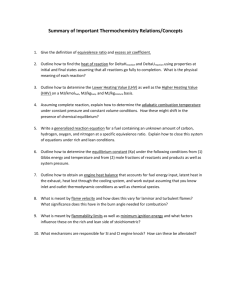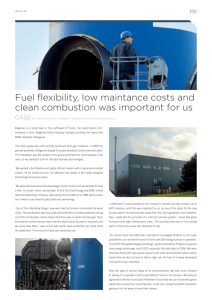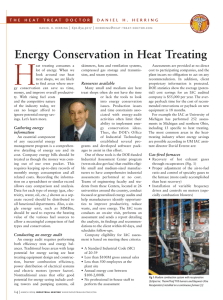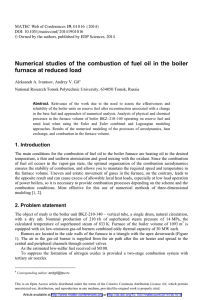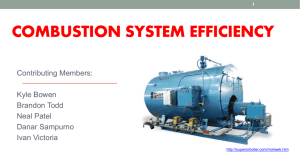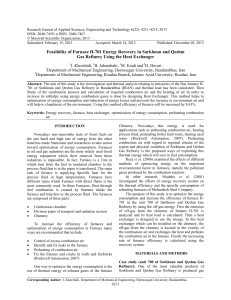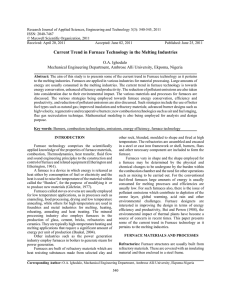HIBBING COMMUNITY COLLEGE
advertisement
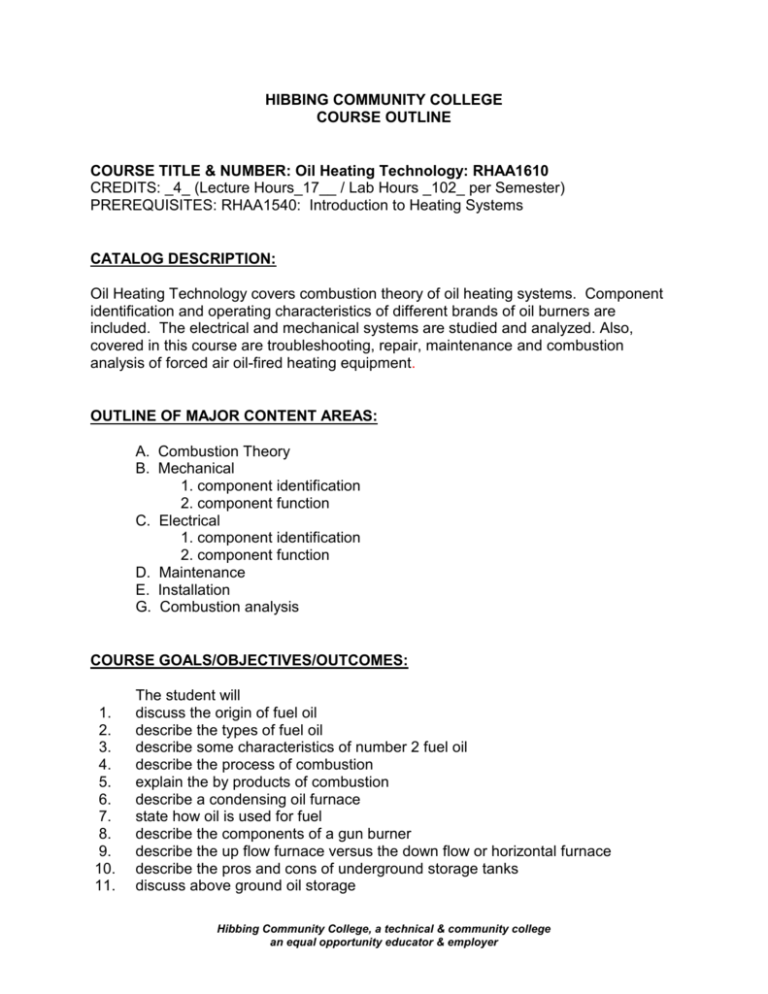
HIBBING COMMUNITY COLLEGE COURSE OUTLINE COURSE TITLE & NUMBER: Oil Heating Technology: RHAA1610 CREDITS: _4_ (Lecture Hours_17__ / Lab Hours _102_ per Semester) PREREQUISITES: RHAA1540: Introduction to Heating Systems CATALOG DESCRIPTION: Oil Heating Technology covers combustion theory of oil heating systems. Component identification and operating characteristics of different brands of oil burners are included. The electrical and mechanical systems are studied and analyzed. Also, covered in this course are troubleshooting, repair, maintenance and combustion analysis of forced air oil-fired heating equipment. OUTLINE OF MAJOR CONTENT AREAS: A. Combustion Theory B. Mechanical 1. component identification 2. component function C. Electrical 1. component identification 2. component function D. Maintenance E. Installation G. Combustion analysis COURSE GOALS/OBJECTIVES/OUTCOMES: 1. 2. 3. 4. 5. 6. 7. 8. 9. 10. 11. The student will discuss the origin of fuel oil describe the types of fuel oil describe some characteristics of number 2 fuel oil describe the process of combustion explain the by products of combustion describe a condensing oil furnace state how oil is used for fuel describe the components of a gun burner describe the up flow furnace versus the down flow or horizontal furnace describe the pros and cons of underground storage tanks discuss above ground oil storage Hibbing Community College, a technical & community college an equal opportunity educator & employer 12. 13. 14. 15. 16. 17. 18. 19. 20. 21. 22. 23. 24. 25. 26. 27. 28. 29. 30. 31. 32. 33. 34. 35. 36. 37. 38. 39. 40. 41. 42. 43. 44. 45. 46. 47. 48. 49. 50. 51. 52. 53. 54. explain the difference in 1 and 2 pipe oil systems explain how water affects fuel oil define and explain the use and functions of fan/limit switches define and explain the use and functions of thermostats describe the sequence of operation for a fuel oil furnace explain and check the sequence of operation of oil stack switches explain heat anticipators explain the causes of electrical problems explain the causes of mechanical failures explain the operation of an oil delay valve explain the sequence of operation of electronic primary controls interpret detailed instructions for wiring circuits understand how to maintain blower motors understand how to purge water from oil storage tanks understand how to replace oil filters adjust air flow for proper temperature difference analyze oil furnaces and appropriately diagnose the electrical system failure analyze oil furnaces and appropriately diagnose the mechanical system failure apply and adhere to all safety rules check and adjust blower system check and adjust fan control check limit and safety controls check stack temperature check the sequence of operation of electronic primary controls check wall thermostat and anticipator for proper operation demonstrate proper use of testing equipment for motors demonstrate use of tools and test equipment following safety practices demonstrate various maintenance task associated with a oil fired furnace demonstrate proper use of ammeter, ohm meter and volt meter determine cause of failure in system components determine effectiveness of an oil pump using a pressure gauge determine effectiveness of an oil pump using a vacuum gauge determine physical condition of motor bearings and rotor draw electrical circuit that conform industry logic using appropriate loads and controls draw electrical circuits that conform to industry logic and symbols install and test a fan/limit control to identify set point of control install residential heating and cooling thermostat measure draft at chimney breaching measure over-fire draft measure resistance of cad cell perform a CO2 test perform an oxygen test perform a smoke test Hibbing Community College, a technical & community college an equal opportunity educator & employer 55. 56. 57. 58. 59. 60. 61. 62. 63. 64. 65. 66. 67. perform combustion test and adjust to optimum efficiency perform efficiency calculations perform safety lockout procedures for burners perform safety shut down of furnace record system data for the mechanical system operation remove test & replace an oil burner motor replace oil nozzle and adjust electrodes set heat anticipator on systems thermostat test and adjust oil pumps and couplers verify if electrical system operation is acceptable verify mechanical system operation is acceptable wire a complete heating system, both line and low voltage system wire actual electrical circuits using wiring diagrams HCC COMPETENCIES MET: Working productively and cooperatively Thinking critically and effectively Communicating creatively and critically STUDENT CONTRIBUTIONS: The student is expected to demonstrate and exercise safety skills attend all lectures participate in class activities participate and implement input into class discussions participate in Lab activities METHODS FOR EVALUATING STUDENT LEARNING: Exams, quizzes, outside assignments, class attendance/participation, group discussions, behavioral observations, simulations and other learning experiences will be translated to points earned. Letter grades A-F will be earned based on points earned. SPECIAL INFORMATION: (SPECIAL FEES, DIRECTIVES ON HAZARDOUS MATERIALS, TEXTBOOK USED, ETC.) ___________________________ Date Approved 3/25/2005 Hibbing Community College, a technical & community college an equal opportunity educator & employer

